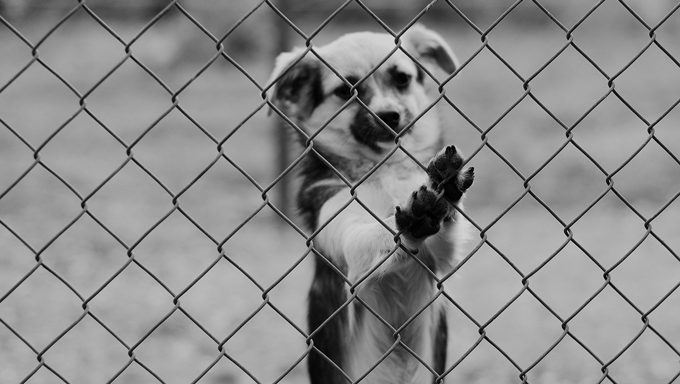It’s hard to imagine that dogs and cats — our furry family members who provide us with so much joy — can fall victim to abuse and neglect. Yet the sad reality is it happens in every state, every year.
In fact, all US states have animal cruelty laws to protect pets, and extreme animal cruelty can now be prosecuted as a federal crime.
Because our pets can’t speak up for themselves if they’re mistreated, it’s our responsibility — no matter whose pet — to speak for them if we suspect there’s a problem.
Would you know what to do if you suspected pet abuse or neglect? Here are some things you know to be part of the solution.
Signs & Symptoms Of Pet Abuse

Just because an animal is timid or aggressive doesn’t mean they’re being abused, so says the ASPCA. But there are signs to look for that may indicate pet neglect or abuse:
- Tick or flea infestations
- An extremely thin, starving animal
- A collar so tight it became embedded in the pet’s neck or created a wound
- Wounds on other areas of the body
- Patches of missing hair
- Limping
- A person striking or otherwise physically abusing an animal.
- Dogs repeatedly left alone without food and water, often chained in a yard
- Dogs who’ve been hit by cars and not taken to a veterinarian
- Pets who are kept outside without any shelter or inadequate shelter in extreme weather conditions
- Animals who cower in fear or act aggressively when approached by their humans
- Pets who’ve been abandoned — owners moving and leaving the animals behind
- Constant howling or crying
- Hoarding — someone keeping more animals than could possibly care for adequately
Reporting The Crime
Once you recognize the signs, it’s important to move quickly to help save the animal. Contact the animal welfare agency in your community.
If you can’t find that number, call your local police department to report suspected animal abuse, and the police should be able to help direct you to the right agency.
If possible, the ASPCA suggests having the following available once you speak to law enforcement:
- A detailed, written report of the approximate date, time, and location of abuse or neglect.
- Photographs — cell phone photos and videos work well — of the pet, the location and the surrounding environment, if possible. But be sure to play it extremely safe; do not enter another person’s property without permission. Pets may also be afraid and in pain, so use caution.
- Contact information from anyone else who has noticed the abuse or neglect.
And while you can remain anonymous when filing a report, which is better than not doing anything at all, consider disclosing your name and information to the agency taking the report because the likelihood of a successful prosecution greatly increases with a witness who is willing to testify.
According to the Humane Society of the United States, most cases never make it to trial, but agreeing to give your testimony in court will only strengthen the case and, hopefully, bring justice for the suffering animal. Plus, you’ll know you really did your part to help.
Have you ever seen and reported pet abuse? What are some of the signs that people should look for? Let us know in the comments below!









